How can we help you?

How can we help you?


Jl-701A zhaga book-18 latch controller of JL-7 series
JL-701A is an ultra-low-cost electronic latch controller developed based on the interface size standard of zhaga book18. It can output 0V or suspended dimming signal (OD door output) through self-sensing. The controller is suitable for lighting scenes such as roads, lawns, courtyards, and parks.
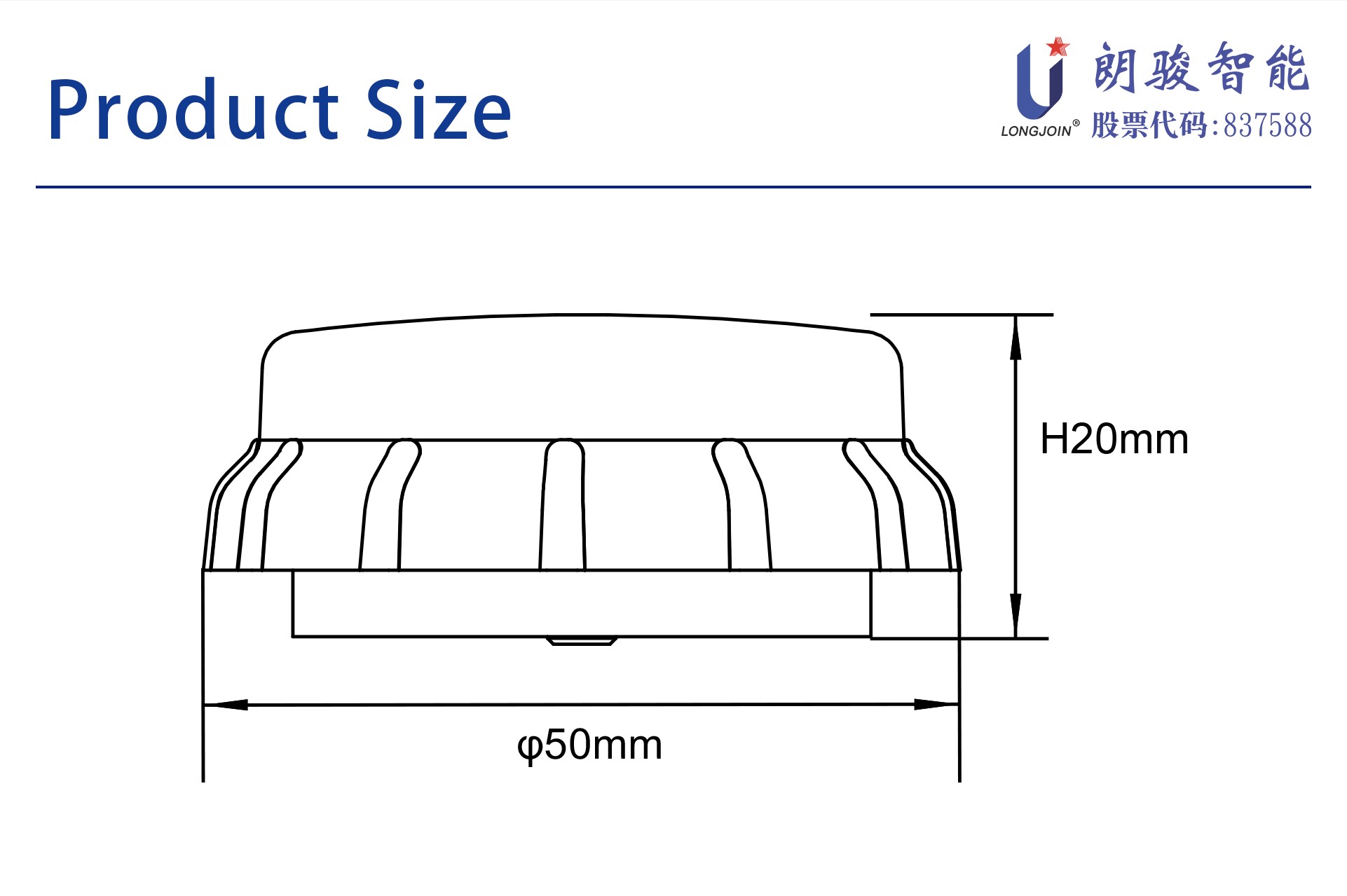
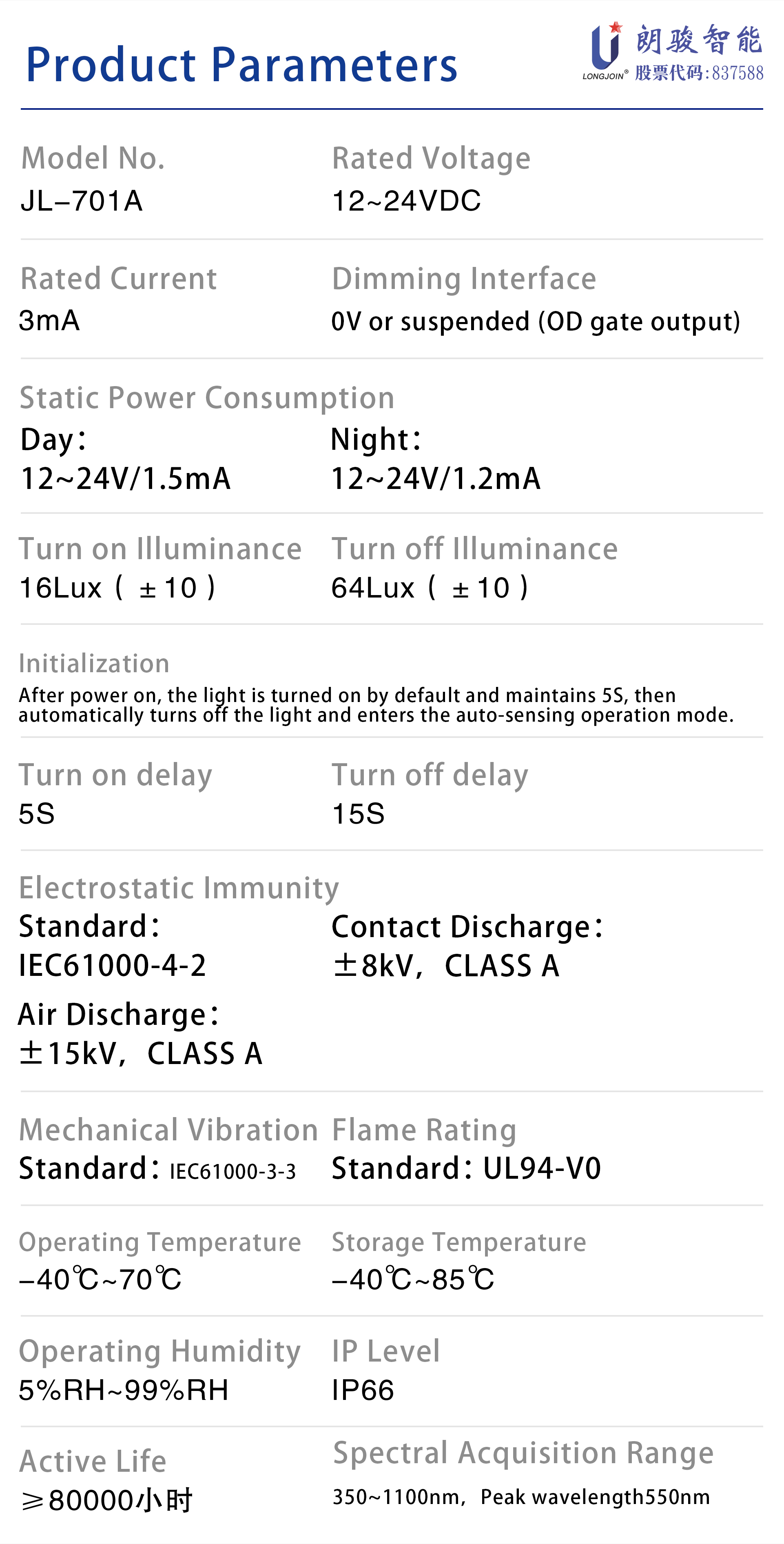
Product features
*Comply with zhaga book18 standard
*Ultra low cost
*Small size, suitable for installation to all kinds of lamps
*< 1.5mA ultra low working current
*Anti false trigger design of interference light source
*No load power consumption ≤ 0.12W
*The illumination ratio of switch action environment is 1:4
*Power on default full on 5S self-test
*The protection grade is up to IP66
Pin definition
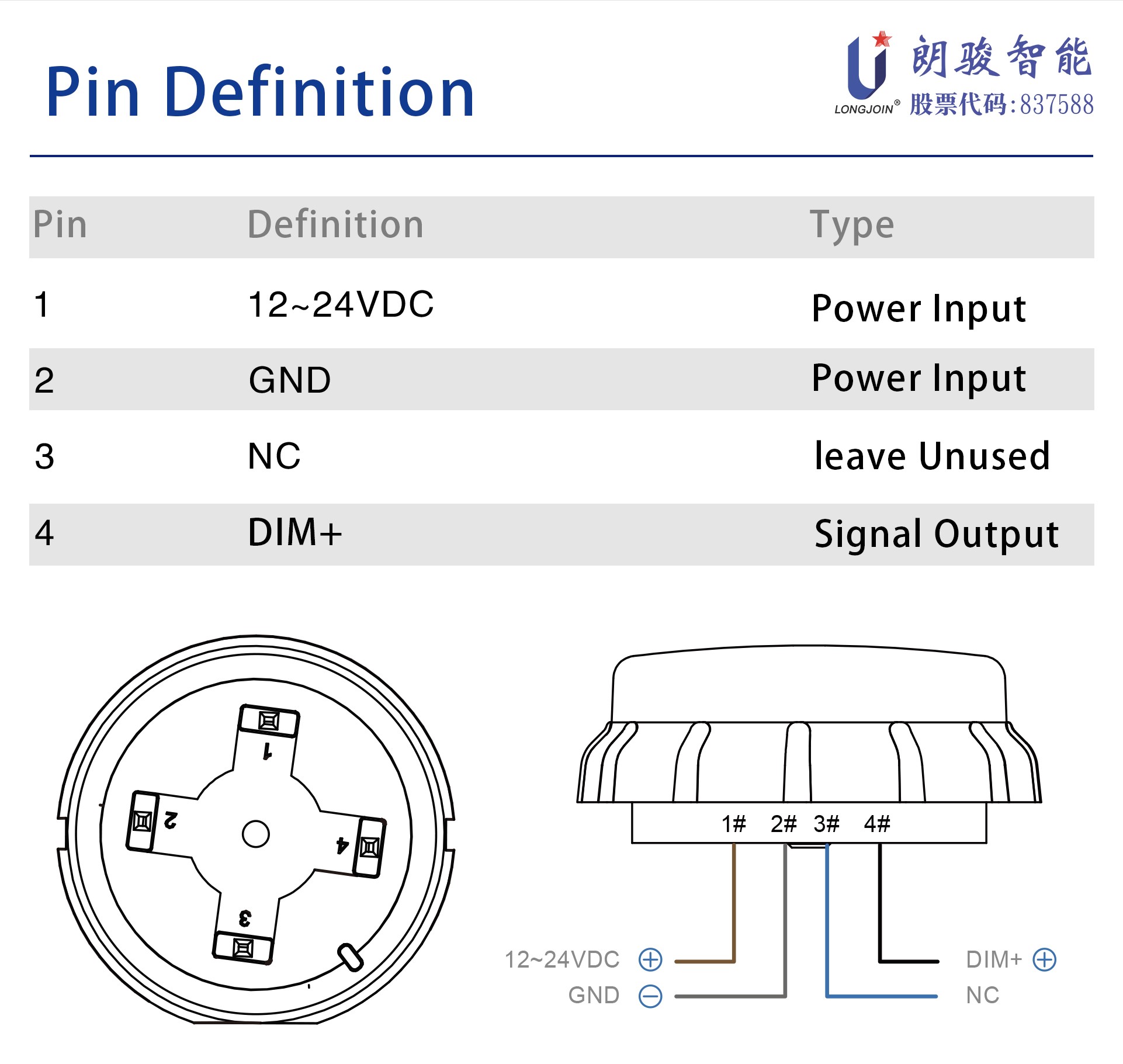
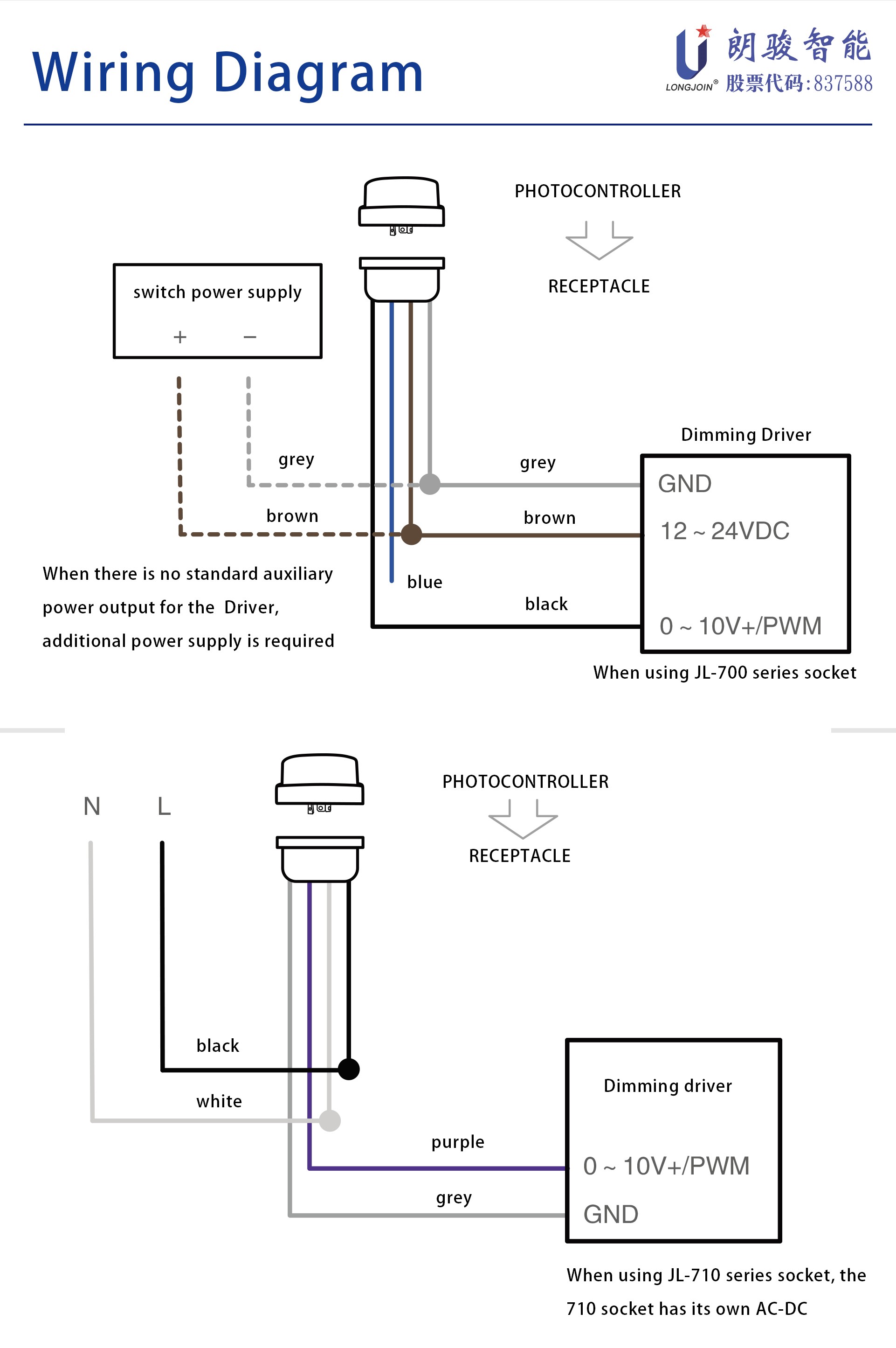
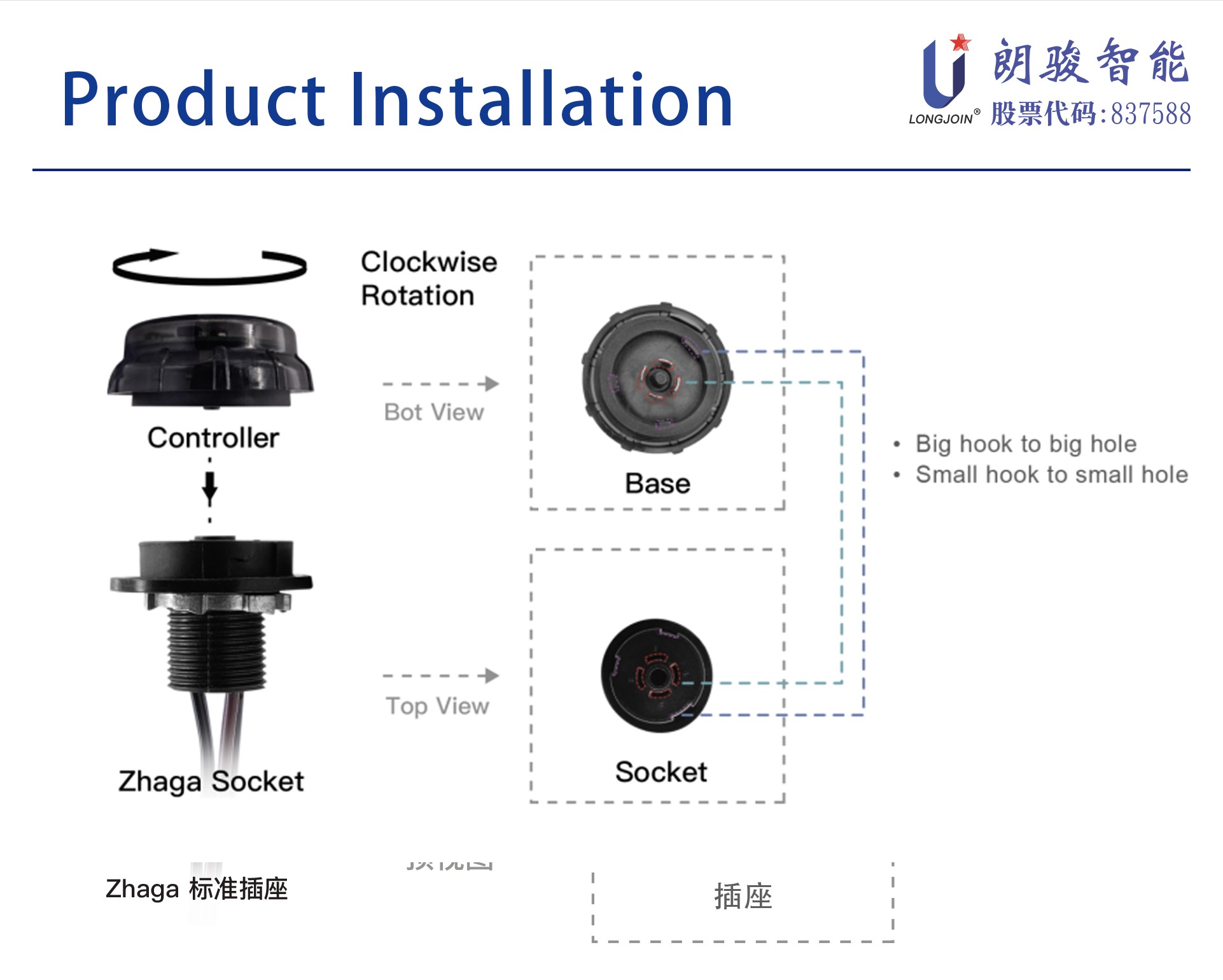
The interface of the product itself has been treated to prevent stupidity. When installing the controller, you only need to screw the controller directly with the base, as shown in the figure above, tighten it clockwise after inserting, and loosen it counterclockwise when removing.
Precautions for use
1. If the negative pole of the auxiliary power supply of the driver is separated from the negative pole of the dimming interface, they need to be short circuited and connected to the controller \2.
2. The controller does not have the reflected light compensation function, so avoid installing the controller near the light source of the lamp to avoid the phenomenon of self illumination.
3. Because the zhaga controller does not have the ability to cut off the AC power supply of the driver, the customer needs to choose a driver whose output current can be close to 0ma when using the zhaga controller, otherwise the lamp may not be completely turned off. As shown in the figure below, the output current curve in the driver specification book shows that the minimum output current is close to 0ma.
4. The controller only outputs the dimming signal to the driver (output 0V to turn off the light, and use the internal pull-up resistance of the driver dimming interface to turn on the light when the output is suspended), which has no light with the power load of the driver and the light source.
5. Don't use your fingers to block the photosensitive window during the test, because the finger gap may transmit light and cause the light to fail to turn on.
